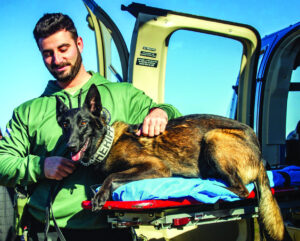Crane flock passes through county
On Monday and Tuesday, Russellville Airport played host to a group of people who are making their way from Wisconsin to Florida in an effort to ensure the continuation of the rare whooping crane species.
The group is part of Operation Migration, a non-profit organization that was started in 1994 after research by co-founder William Lishman proved that assisted migration using ultralight aircraft could be successful.
The team that is currently leading nine juvenile whooping cranes to their wintering spot in Florida started their journey on October 9 at the Necedah National Wildlife Refuge in central Wisconsin where the cranes were reintroduced to their natural habitat.
The cranes have been cared for by handlers who have dressed in baggy white suits and used crane puppets so the juvenile whooping cranes wouldn’t become dependent on humans.
The cranes have also been acclimated to the sounds of aircrafts so they would be accustomed to following the three ultralight aircrafts that are currently leading them on the migration.
Liz Condie, spokesperson for Operation Migration who serves as chief operating and financial officer and the director of communications and fund development, said there are nine people involved in the current migration including pilots, a retired veterinarian, interns and handlers who take care of the cranes.
Condie said for the first time, they also have two professional educators who have come along for the ride to visit schools along the migration route to educate children about different topics from aviation to biology to conservation.
“Operation Migration is a great organization that I first got involved with in 2005 as a consultant because I had been involved in nonprofits my whole career,” Condie said. “I was only supposed to help out for six weeks but I’m still here because I was just totally captivated by the concept of doing something to save a species from extinction.”
According to Operation Migration, the North American whooping crane population reached its all-time low in 1941 when there were only 15 birds in the migrating flock due to loss of habitat and hunting practices.
Over the years the flock increased to around 180 birds in 1999, but scientists realized the need for separate flocks in case the birds were struck with a disease or a natural disaster and completely wiped out, which is one of the reasons Operation Migration was established – to create more migratory flocks that will nest in different parts of the country to ensure the survival of the whooping crane species.
Condie said the current migratory flock they are leading will be split near the end of their journey and will wind up in one of two places in Florida – the Chassahowitzka National Wildlife Refuge and the St. Marks National Wildlife Refuge.
“After bad tropical weather in Florida killed almost all of our cranes from one migration, we realized the importance of not having all our whooping cranes in one basket, per say, so we started dividing them up to the two different wintering spots,” she said.
Condie said Operation Migration has passed through Franklin County each year and has made stops at the Russellville Airport every year except for last year when they had good weather and were able to continue with the migration without a stop.
“We always love stopping in Russellville because the folks at the airport are always phenomenal every year to let us use it as a base,” she said. “We appreciate them so much and we are always well-received by the people here, too.”
Condie said each year they have several community residents who turn out for the flyover when Operation Migration heads out.
“People are just so interested to see this rare species of bird, especially when they’re right here in the county.”
The flyover normally takes place at the airport but has been moved to the intersection of Alabama 243 and Franklin 75 this year. However, Condie said they wouldn’t know an exact day or time when the flyover would take place since their departure time is determined by the weather.
For those who would like more information about Operation Migration or to follow the migration route through the field journals, visit www.operationmigration.org.







